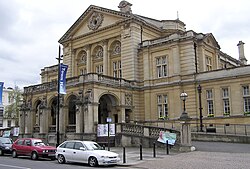Modern Age Architecture
 |
| Cheltenham |
It may be startling to see so many buildings which seem to have been transported bodily from Manchester, Glasgow, Bristol or London – except that, on closer inspection, adaptations to the climate are evident. Some are designed by major British architects – George Gilbert Scott, Edwin Lutyens and Herbert Baker among them – but most are by less familiar names: some who sent out drawings from Britain but others – like F.W. Stevens, William Emerson, Arthur Shoosmith – who settled in India for years or decades, while, towards the end, there was native Indian architectural talent.
Then there is Indo-Saracenic architecture, a Victorian Orientalist hybrid, promoted by the British. A Battle of the Styles raged in Victorian India in parallel with the Gothic-Classical debates back home: whether to impose our own styles as would any conqueror, proclaiming the superiority of British civilisation, or legitimise our role as rulers by appropriating Indian styles? There will be much to debate on this tour.
Chandigarh, the dream city of India’s first Prime Minister, Sh. Jawahar Lal Nehru, was planned by the famous French architect Le Corbusier. Picturesquely located at the foothills of Shivaliks, it is known as one of the best experiments in urban planning and modern architecture in the twentieth century in India. Le Corbusier conceived the master plan of Chandigarh as analogous to human body, with a clearly defined head (the Capitol Complex, Sector 1), heart (the City Centre, Sector 17), lungs (the leisure valley, innumerable open spaces and sector greens), the intellect (the cultural and educational institutions), the circulatory system (the network of roads, the 7 Vs) and the viscera (the Industrial Area).

No comments:
Post a Comment